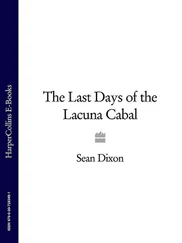Seen through such rose-tinted spectacles, even the old capital seemed to have something to recommend it. She told Paul and Maria Fëdorovna that General Bauer’s aqueduct at Rostokino, built in imitation of Roman models to channel water into the city from the springs at Mytishchi and completed only in 1803, was already ‘the best building in Moscow: it seems as light as a feather’. 11If the city itself was ‘far better than it used to be’, as Catherine was prepared to acknowledge on the return journey, then so were the villages on the main Petersburg road, rebuilt in stone as a consequence of the Provincial Reform. 12While the ancient settlements along the route had sunk into decline—‘No place,’ Coxe admitted in 1778, ‘ever filled me with more melancholy ideas of fallen grandeur than the town of Novgorod’—the new and recently restored towns showed signs of genuine vigour. Enlivened by a ‘rising spirit of commerce’, Tver itself promised to be ‘no inconsiderable ornament to the most opulent and civilized country’. 13Although such rapid improvements could hardly have been achieved without the active involvement of merchants who shared the Charter to the Towns’ aspirations towards a prosperous civic society protected by law, Catherine took legitimate pride in having inspired them under the energetic direction of Tver’s Protestant governor, Yakov Sievers. 14‘I am told that this is a consequence of the arrangements I put in place and which have been followed to the letter for ten years: and seeing all that, I say that I am well pleased.’ 15
Although the main aim of her travels was to publicise the benefits of modern technology and administration, the rituals that punctuated the journey spoke of the resilience of an older cultural world. To celebrate their recently granted charters, nobles and townsmen flocked to pay homage to their sovereign. The merchants of Torzhok presented her with leather bags and slippers, embroidered with golden thread, which she promptly sent back to St Petersburg as a gift for Constantine and Alexander. 16As befitted an expedition resembling a medieval monarch’s progress, the tone of the proceedings remained overwhelmingly religious. Catherine attended cathedral services at every major calling point, kissing the holy relics in several more churches along the way and permitting a succession of bishops, abbots and abbesses, themselves attended by countless clergy, monks and nuns, to kiss her hand. 17Yet even the religious aspect of the journey was given a distinctive new colouring. After dining in Moscow with Archbishop Platon and his brother, Alexander, archpriest of the Dormition Cathedral, the empress made a parting gesture towards toleration by receiving a delegation of registered Old Believers at the Petrovsky Palace on 5 June. 18Four days later, on the feast of the Holy Spirit, she laid the foundation stone for Prince Nikolay Lvov’s monumental neoclassical cathedral at the Torzhok monastery of Boris and Gleb. (The Scottish stonemason Adam Menelaws had left Tsarskoye Selo a week ahead of her to begin work there.) 19
The final part of the return journey was completed by water from Borovichy on 11 June. One of the large galleys manned by the 674 sailors under Vice Admiral Pushchin’s command was devoted entirely to the preparation of lunch, another was responsible for dinner. Catherine shared her craft with Yermolov and her favourite ladies-in-waiting, Anna Protasova and Maria Perekusikhina. 20As Ségur later recalled, Lake Ilmen, a ‘sort of calm and limpid sea’ south of Novgorod, ‘was covered with a number of boats of all sizes, adorned with painted sails, and garlands of flowers’:
The numerous bodies of boatmen, peasants and peasant girls who were on board of them, strove with each other to approach our splendid flotilla, and made the air resound with their musical instruments and loud shouts, and at the close of day, with their melodious but rather plaintive songs. 21
Catherine’s company was more raucous. As always, she had taken plenty of work with her, chivvying Prince Vyazemsky about a series of unresolved criminal cases in St Petersburg province. In the evenings, however, she and her entourage relaxed by compiling a fantastic story about the revolution that had failed to materialise in Moscow. No wonder ‘Prince Potëmkin died of laughing throughout the journey’. 22
Though the wide range of personal and public funds used to subsidise the empress’s travels makes it impossible to determine their total costs, the following accounts, issued by the Court administration, give some estimate of the types of expenditure involved:
Rewards: 30,368 r.
Fees for horses at staging posts between Tsarskoye Selo and Moscow and back to Borovichy 81,535 r. 6k.
To the Court Office for various duties connected with the journey 12,000 r.
For construction of vessels here and at Borovichy 5,060 r. 12.5k.
For boatmen and workmen on the boats during the cruise and other necessities 18,335 r.
For repairing the road and bridges to Moscow 2,000 r.
For schools, almshouses and hospitals in Moscow, Novgorod and Tver provinces 27,900 r.
For the building of homes for the homeless, in Novgorod, 6,000 and in Klin, 2,000 8,000 r.
For things used on the journey 36,305 r.
Total: 231,493 r 18.5k. 23
Back at Peterhof for the twenty-third anniversary of her coup, Catherine boasted to Grimm about the comparative etymological dictionary on which she had been working since the death of Lanskoy: ‘It is perhaps the most useful thing that has ever been done for all languages and every dictionary, and namely for the Russian language, of which the Russian Academy has undertaken to produce a dictionary, and for which, if the truth be told, it totally lacked the requisite knowledge.’ 24Requests for information were sent across Europe, and also to both South and North America. Invited to contribute lists of Native American words by the marquis de Lafayette, George Washington replied in May 1786 that he would do his best to help Catherine, ‘but she must have a little patience—the Indian tribes on the Ohio are numerous, dispersed & distant from those who are most likely to do the business properly’. 25She forged ahead regardless. Linguarum totius orbis, vocabularia comparativa was published in 1787 with a title page in Russian and Latin. Since the empress’s contribution depended more on enthusiasm than expertise, the scholarly value of the work owed most to Peter Simon Pallas, the leader of the Academy of Sciences’ expeditions to the steppes. However, her own patriotic instincts were reflected in a determination to detect Slavonic influences in many of the world’s languages. 26
Unlike her etymological dictionary, another of Catherine’s projects in the summer of 1785 was still incomplete in 1796 when her son decided to dismantle it. By that time, she had spent at least 823,389 roubles on the monumental neoclassical Pella Palace, designed by Ivan Starov overlooking a bend in the River Neva to the east of St Petersburg. Here, opposite Potëmkin’s estate at Ostrovki, she could watch the barges from Vyshny Volochëk gliding silently towards the capital and indulge her passion for garden design. ‘It’s a beautiful situation,’ she had told Grimm in April, ‘with a variety of views and it will be good to enhance it all with an English park.’ Having commissioned three white marble columns for her garden when she returned from Moscow, she confided the ‘fantasy that took hold of me three days ago, when I had a sort of fever for these three columns that I wish to see executed in all their grandeur and beauty’. 27
* * *
Only one false note had been struck on the visit to Moscow, and it was possibly a significant one. Although she reacted favourably to most of the new buildings there, Catherine angrily rejected the interiors at suburban Tsaritsyno, declaring the palace uninhabitable as it stood. 28Bazhenov, who had kept her secretaries in close touch with his plans since being commissioned in 1776, had evidently failed to prepare the empress for the results. 29She was not the only critic of his stunning neo-Gothic extravaganza. An English visitor in 1792, who found the buildings at Tsaritsyno ‘crowded together in such manner, that one could fancy it the object of the architect to shut out as much as possible the beauties of the situation’, noted that the external embellishments were ‘stuck all over in such profusion that we compared the ground on which they were stuck to a larded chicken’. 30Yet perhaps there was a more ideological reason for the empress’s irritation. Though she did not say so, it has often been supposed that she was offended above all by the Masonic symbolism of Bazhenov’s designs.
Читать дальше












